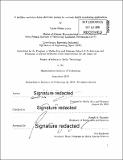| dc.contributor.advisor | Joseph A. Paradiso. | |
| dc.contributor.author | Núñez López, Carlos,
author. | en_US |
| dc.contributor.other | Program in Media Arts and Sciences (Massachusetts Institute of Technology) | en_US |
| dc.date.accessioned | 2023-04-07T16:54:40Z | |
| dc.date.available | 2023-04-07T16:54:40Z | |
| dc.date.copyright | 2018 | en_US |
| dc.date.issued | 2019 | en_US |
| dc.identifier.uri | https://hdl.handle.net/1721.1/150466 | |
| dc.description | Thesis: S.M. in Media Technology, Massachusetts Institute of Technology, School of Architecture and Planning, Program in Media Arts and Sciences, 2019 | en_US |
| dc.description | Cataloged from PDF version of thesis. | en_US |
| dc.description | Includes bibliographical references (pages 69-74). | en_US |
| dc.description.abstract | Most of current wearable devices used for health monitoring (e.g. Fitbit) are composed of bulky rigid electronics that are not customizable and are too rigid for the skin. To overcome such limitations, a modular system based on thin and stretchable electronic modules was proposed. To link modules together, a novel four pin sliding connector was designed, fabricated, integrated into an stretchable electronic circuit and characterized. The first part of the thesis focused on investigating different stretchable conductive materials that could be integrated into soft rubber substrates. Two materials were tested. First, a commercial silver ink was deposited onto polyurethane rubber (PUR), showing high conductivity but minimum stretchability (below 3% strain). Second, serpentine shaped FPCs were designed and integrated into a silicone substrate, showing stretchability up to 160-170% strain with minimum changes in conductivity (below 30%). Additionally, a tensile cycling test showed stable electromechanical behavior up to 3,500 cycles at 30% maximum tensile strain. The second part of this work addressed the design, fabrication and testing of a novel system for modular stretchable electronics. A four pin sliding connector to enable I2C communication was fabricated by assembling 3D printed parts with brass components manufactured with an EDM cutter. The mechanism could be easily integrated within the previously made stretchable FPC serpentines and demonstrated excellent electromechanical performance. A sample module could be stretched until complete serpentine failure (120% strain) with resistance values across the four pins lower than 2[omega]. Furthermore, the device evaluation on a treadmill showed changes in resistance lower than 4.27[omega] during the 15 minute experiments. | en_US |
| dc.description.statementofresponsibility | Carlos Núñez López. | en_US |
| dc.format.extent | 74 pages | en_US |
| dc.language.iso | eng | en_US |
| dc.publisher | Massachusetts Institute of Technology | en_US |
| dc.rights | MIT theses may be protected by copyright. Please reuse MIT thesis content according to the MIT Libraries Permissions Policy, which is available through the URL provided. | en_US |
| dc.rights.uri | http://dspace.mit.edu/handle/1721.1/7582 | en_US |
| dc.subject | Program in Media Arts and Sciences | en_US |
| dc.title | A modular and stretchable electronic system for on-body health monitoring applications | en_US |
| dc.type | Academic theses. | en_US |
| dc.type | Academic theses. | en_US |
| dc.type | Thesis | en_US |
| dc.description.degree | S.M. in Media Technology | en_US |
| dc.contributor.department | Program in Media Arts and Sciences (Massachusetts Institute of Technology) | en_US |
| dc.identifier.oclc | 1373630317 | en_US |
| dc.description.collection | S.M. in Media Technology Massachusetts Institute of Technology, School of Architecture and Planning, Program in Media Arts and Sciences | en_US |
| dspace.imported | 2023-04-07T16:54:40Z | en_US |
| mit.thesis.degree | Master | en_US |
